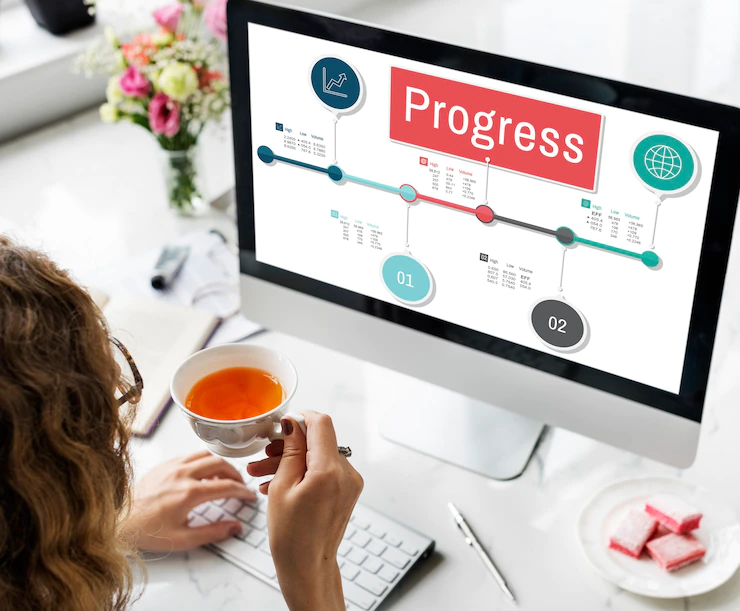Adding Value To Software Apps Through Testing Life Cycle
4 Mins Read
Published on: 18 August 2023
Last Updated on: 13 November 2024

toc impalement
Virtually every industry needs software that enables efficient business processes and empowerment. But the leading indicator of software is its quality, achieved through testing. In addition, a user-friendly interface will significantly increase the user audience, which means that the financial profit of the organization will increase.
Defining The Testing Life Cycle
The Software Testing Life Cycle is a step-by-step process that improves product performance through test planning and analytics. Software testing increases the value of the created products by saving resources for detecting and correcting errors. This article will look at testing life cycles and how to properly conduct them.
The testing process is a unique tool that the development team uses to achieve the requirements. Next, we will look at the software lifecycle testing process.
Stages Of The Testing Lifecycle

Having decided on the testing functionality, it is necessary to use STLC for the developed application. The testing life cycle includes several stages.
Analyze The Requirements
The quality team and stakeholders establish the requirements for the product. Given the priorities, this will allow you to determine the scale of the testing process. Requirements are functional and non-functional. Concentrating on more essential points without spraying on secondary factors is necessary.
You must also choose a testing environment and a test method: that can be automated and checked manually. At the end of this stage, a list of requirements should be drawn up.
Test Planning
This step assumes that the test team leader will determine the costs, resources, and tools required for testing. In addition, you need to set their limit. A test schedule is created at this stage, and a test methodology is selected. Logon planning includes the following:
- it is necessary to complete a group of specialists;
- determine the duration of testing;
- choose the tools for the verification environment;
- write requirements for the system, including limitations for previous versions of the application that are no longer supported;
- compile a list of test scenarios, considering the requirements analyzed in the first stage.
We have listed the main ones, but many different actions need to be considered.
Creation Of Test Scenarios
After creating a test plan, you must develop test scenarios. Creating a script for testing includes specific data required for testing. Let’s list the actions for the test scenario:
- ensure a successful login to the system, given the user account;
- consideration of the option of incorrect entry in the absence of account data;
- create a variant of incorrect entry when the user enters his data incompletely;
- consider the option of incorrect login to the system with incorrectly specified user data;
- create test cases and scripts for the automated process.
We have given an illustrative example of the steps taken to develop test cases. You can enable other actions as needed.
Set Up A Testing Environment
The stage can be carried out parallel with the previous step – creating test scenarios. Having the conditions for the testing environment, it is configured. The test area must be as close as possible to the operational needs of the application. A specialist or a tester configures the area. Let’s imagine the possible actions for setting up a test area:
- operating system with minimized conditions;
- framework – a ready-made software platform;
- test runner – software for launching testing;
- library of statements;
- test data, dummy library, and assets.
The more test environment settings are made, the more efficient testing will be.
Direct Testing
The testing phase begins. During the testing process, the results are documented, and the detected errors are sent to the testers to correct the test scenario, so there may be a need for re-testing and additional test cases to achieve the desired result.
Completion Of The Testing Process
The testing life cycle is completely closed at the end of all test checks, detection of errors, and fixing of the test results. At this stage, all the information received is accumulated, and reports are compiled for evaluation by interested parties. A complete set of documentation must be created for all completed project checks. Reports should be structured and systematized by testing stages.
It’s also a good idea to optimize the results as much as possible and include them in your review. The main criteria at the final stage are time, cost, test coverage, and prediction of expected results. All these criteria determine the overall effectiveness of the audit.
The output of the final stage is the compilation of a detailed report on the completion of the testing process, including meaningful information and specific verification indicators indicating the degree of achievement of results.
Conclusion
A high-quality testing life cycle can only be provided by a professional team of specialists who will increase the confidence of stakeholders. A detailed study of errors will allow you to understand how to eliminate this problem, ensuring the creation of better software. It will also save resources for creating a subsequent version of the application. Finding and eliminating all errors will be an impractical option. Therefore, it is necessary to concentrate on those errors that most adversely affect the performance and functionality of the software.
Read Also:


















Comments Are Closed For This Article